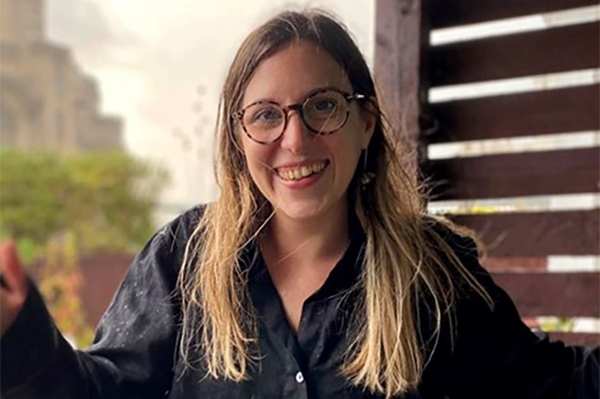Data Science Fellow Interview - Magda Satrazani

To give you a more personal insight into work, motivation and challenges of our students we have asked them a few questions as part of the Data Science Fellow Interview series.
In this edition, we speak to Magda Satrazani who has been studying ‘Shapes studies in neutron-rich cerium isotopes’ during her time at the University of Liverpool.
What attracted you to the LIV.DAT CDT? Has it fulfilled your expectations?
The LIV.DAT group offers the possibility of being part of a great network of experts in the field of physical sciences and industry.
The seminars, that were organised frequently, were very enlightening and have contributed significantly in broadening my knowledge in applied physics. As a PhD student at the University of Liverpool, I found this a unique opportunity to expand my ideas in different analysis techniques ,than the ones I am more familiar with, and to meet some very inspiring people. I also had the chance to interact with other members of the LIV.DAT community and share interesting ideas. Being part of this team has definitely fulfilled my expectations.
Can you explain in a few words what your project was about and what you have achieved?
My research topic concerns the structure and shape of atomic nuclei, particularly with respect to radioactive isotopes that have an excess of neutrons, so-called neutron-rich nuclei. The constituent particles of the atomic nucleus, namely protons and neutrons, combine in different numbers to produce all known isotopes, with about 300 or so being stable and observed all around us. There are however another 3000 unstable isotopes that are known to exists with half-lives ranging from billions of years down to just a few microseconds. These isotopes undergo a range of different decay modes, most predominately beta-decay, which converts a proton in to a neutron with the emission of an electron, or vice-versa with the emission of a positron, depending on which particle is in excess.
In my research, I take advantage of this decay to study the structure of the daughter nucleus, which further decays with the emission of gamma-ray radiation. I am particularly interested in studying the energy and intensity distributions of these gamma-rays as a route to understanding the shape of the nucleus. It has been proposed that nuclei can have exotic deformation modes, not just being spherical or rugby-ball shaped, but even taking the form a pear. I have performed experiments at the TRIUMF Radioactive Ion Beam Facility in Vancouver, Canada to investigate this phenomenon in isotopes of the element cerium.
Currently, I am at the final year of my PhD studies and have managed to acquire some very interesting results on the energies and electromagnetic properties of the gamma-rays being emitted from the isotopes 146,148,150Ce. Especially for the 150Ce isotope, it is the first time that it is proven, though spectroscopy techniques, that its shape is indeed deformed and resembles to that of a pear.
What has the CDT provided you professionally?
Through the CDT I had the chance to be introduced for the first time to the industry world and consider other paths and applications of nuclear physics. It made me consider more options of research and has provided me with a broad network of people, all of them welcoming and happy to answer questions and help.
Can you say something about your next career move?
I am expecting to submit my thesis this spring and I would very much like to stay in the field of research and to do what I love the most. Experimental nuclear physics of course! I have been recently offered a Postdoc position in the Nuclear Spectroscopy and Nuclear Reactions group at KU Leuven in Belgium, and about to start working on a very challenging and interesting project. Can't wait!
What is your favourite memory from your time as part of the CDT?
My favourite memories from my time as part of the CDT are definitely the workshops, mini-conferences and events organised throughout the years. They were a wonderful opportunity to present my work in a wider audience, and during all the social activities we had fun and shared nice moments.